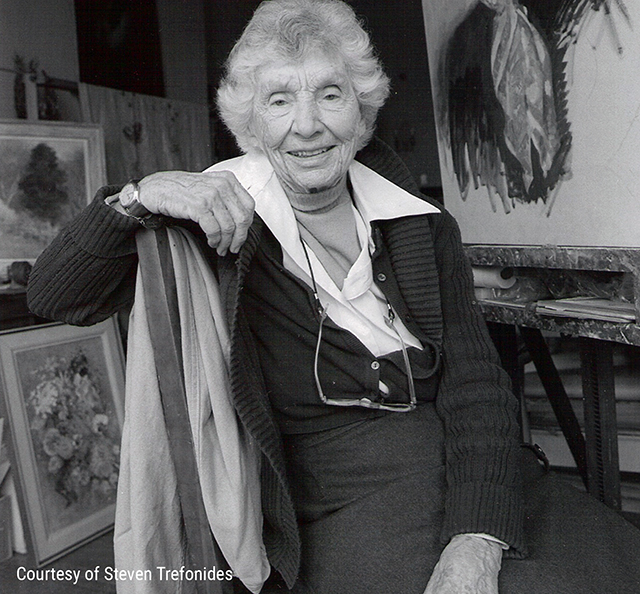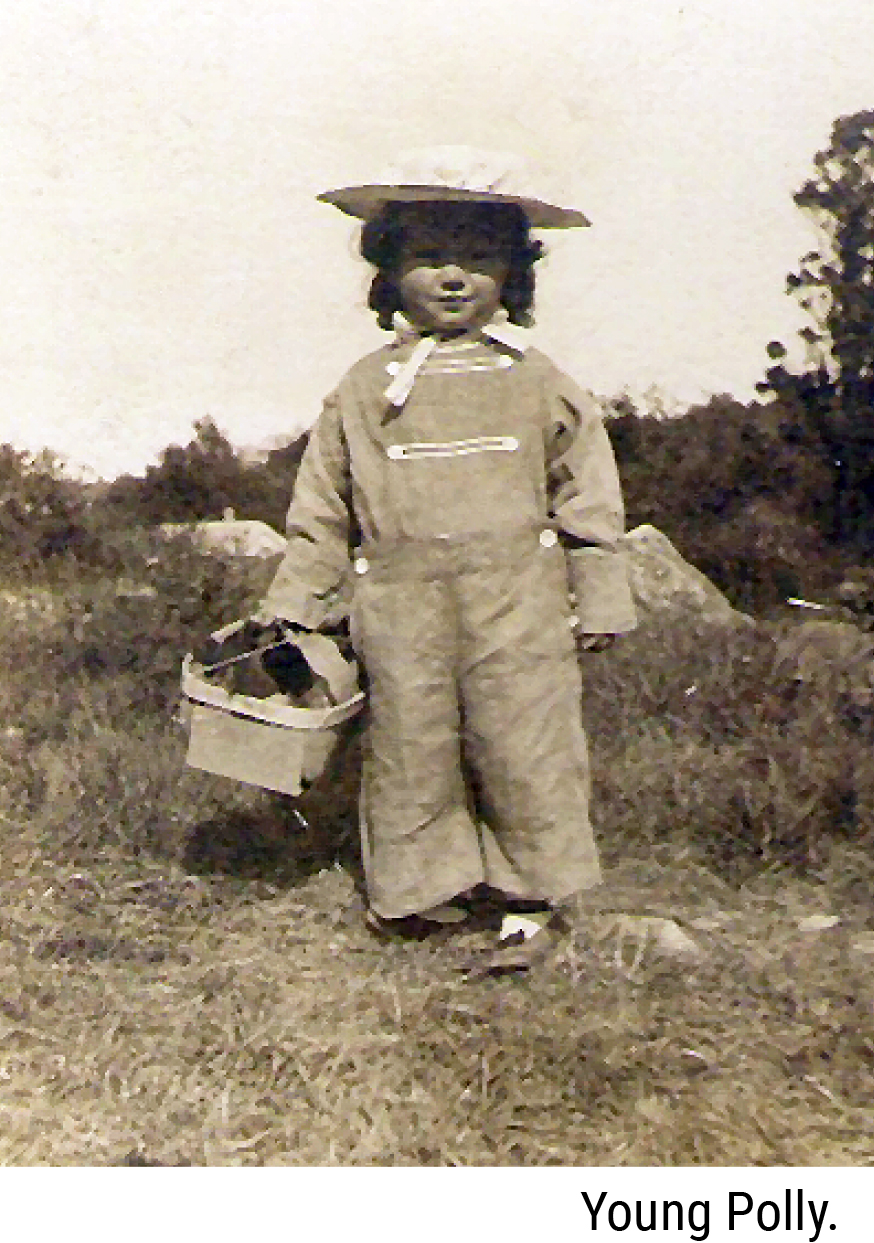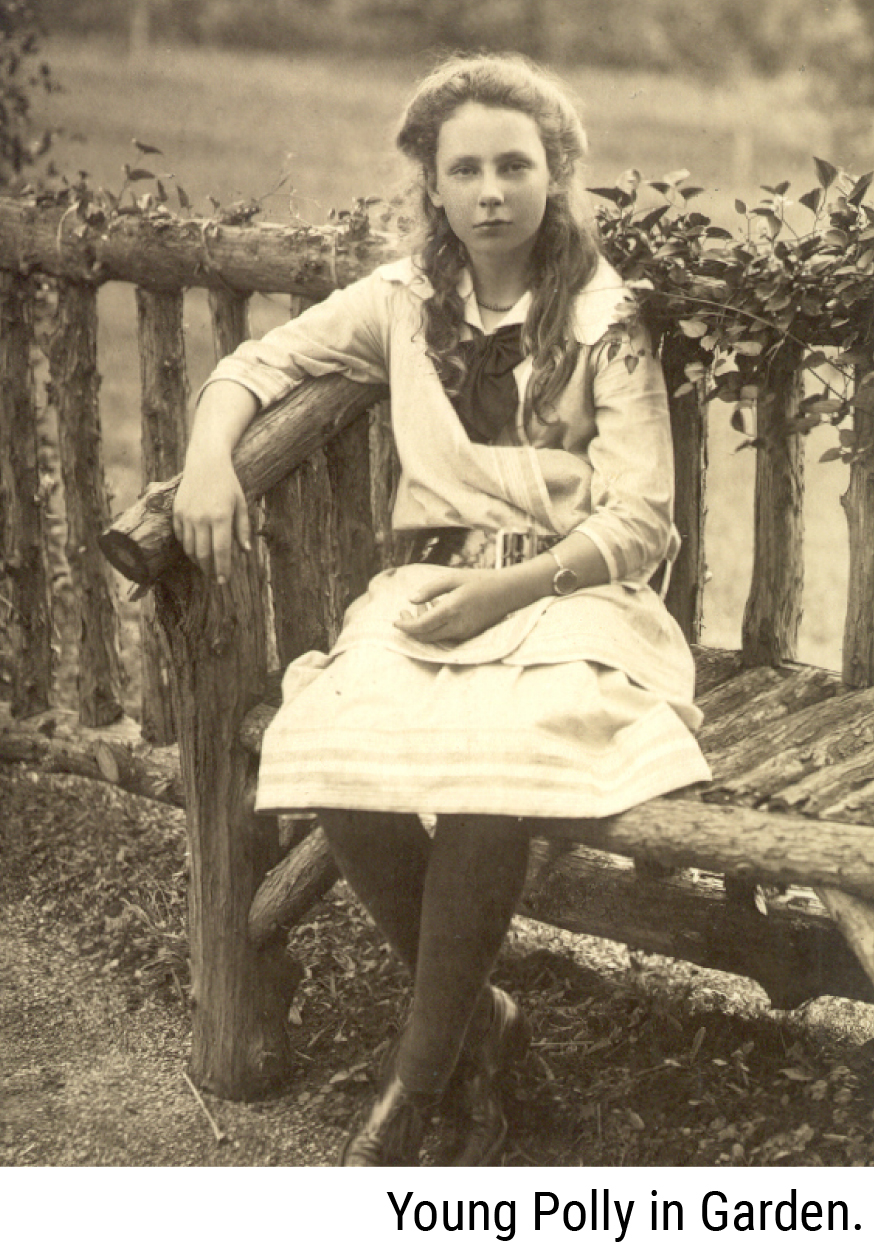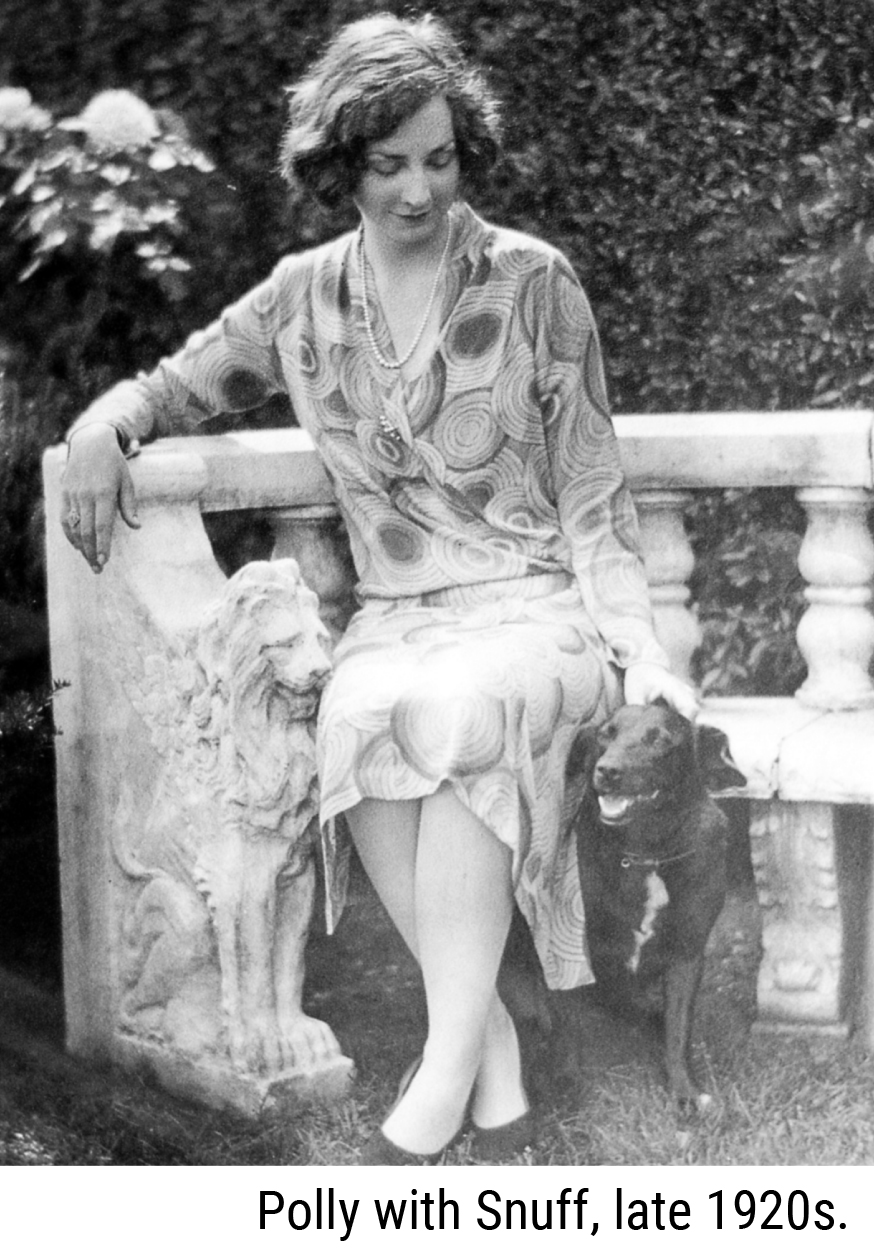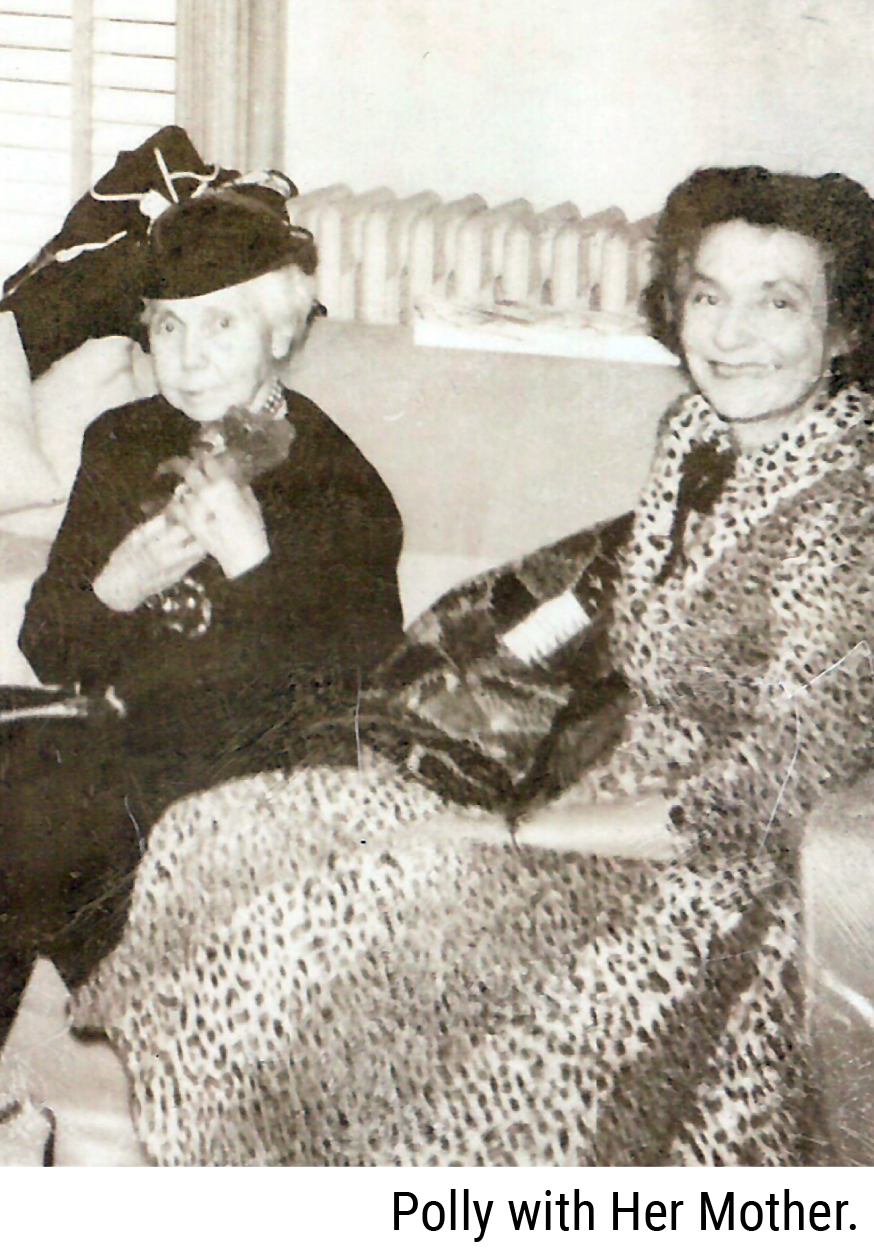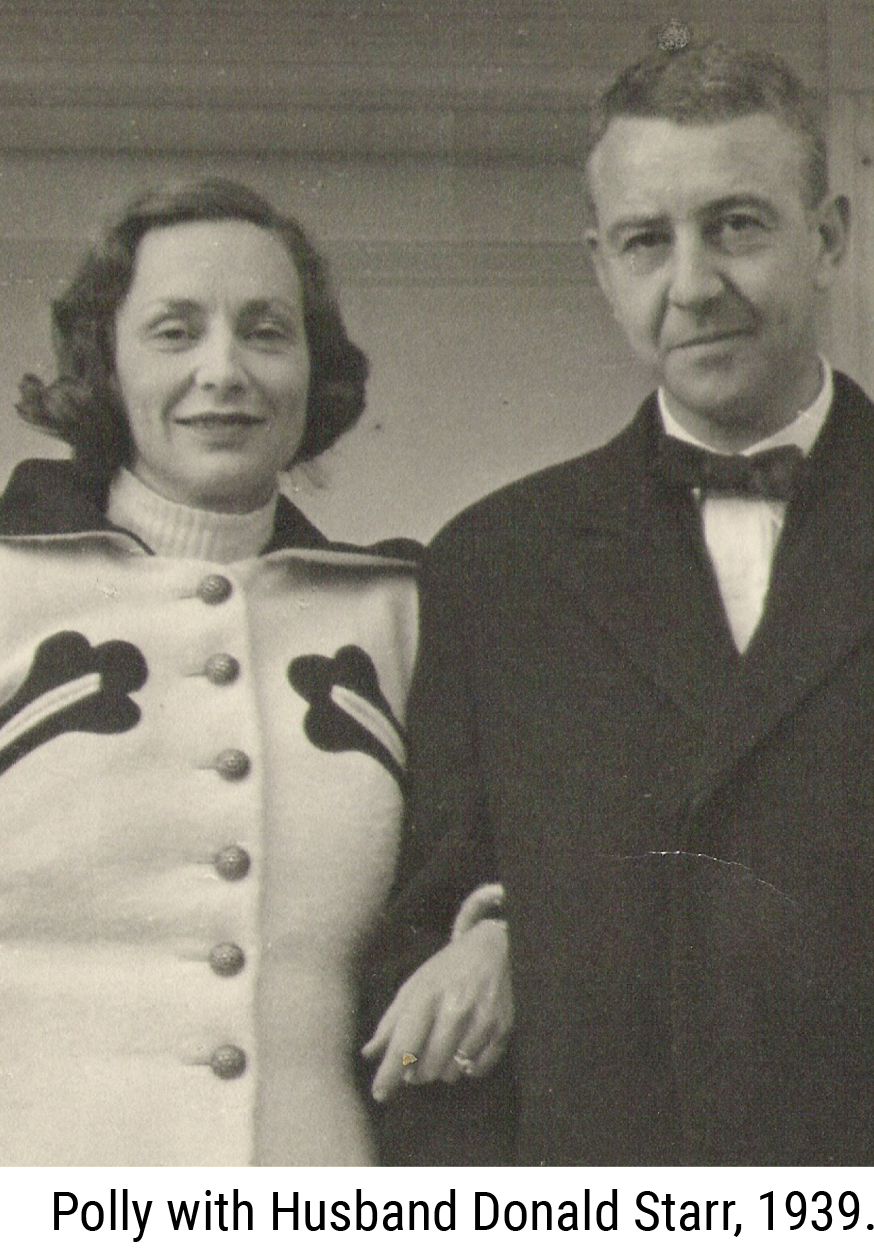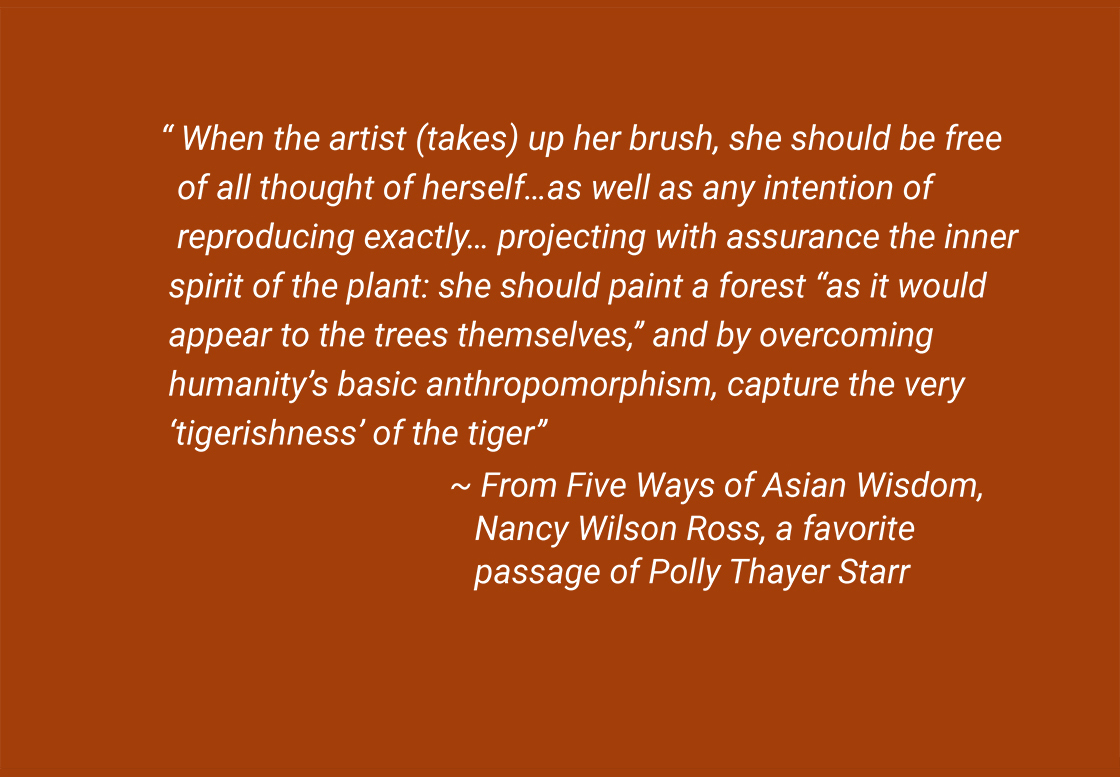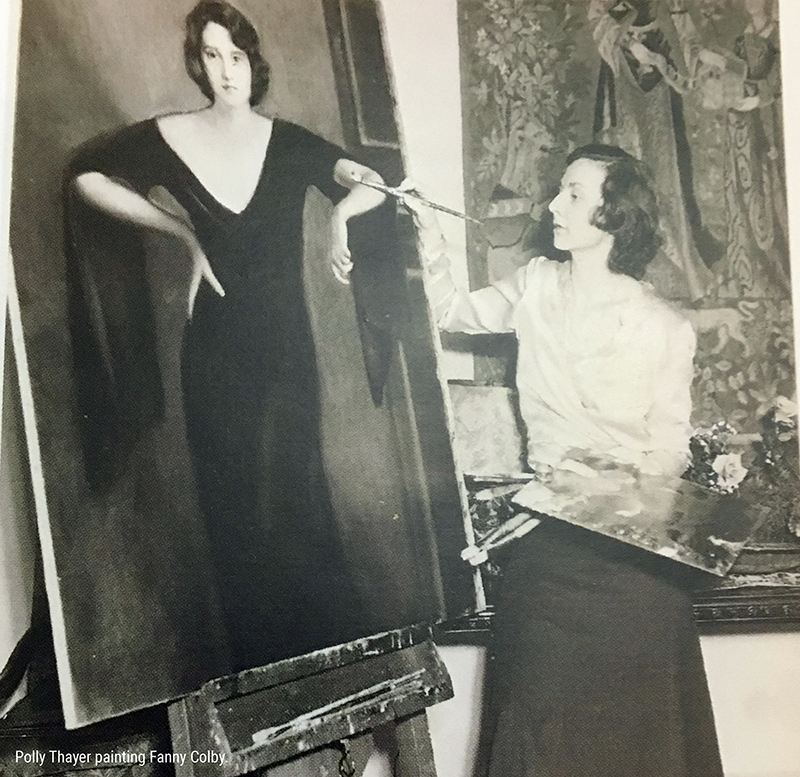For some years, Thayer had been seeing a good deal of a Boston lawyer named Donald Starr, who had been at Harvard with her brother. In spite of their mutual attraction, she was hesitant to enter into marriage, unwilling to put less tham her whole heart into either marriage or career, and uncertain as to how well the two could coexist. In 1932, Starr resigned his post as Assistant Attorney General of Massachusetts to sail around the world with several friends in a schooner he had built for that purpose. Thayer went to meet him in Genoa, Italy and became Polly Thayer Starr, although she continued to use her maiden name professionally. The couple spent their honeymoon in Paris, and then Donald rejoined the Pilgrim to finish his circumnavigation, while Thayer, whose tendency to sea sickness made her an unenthusiastic sailor, steamed home directly.
Marriage did not initially put much of a crimp in Thayer’s artistic activity. While her husband, home from his expedition, deliberated on his plans for the future, she painted a life-sized portrait of him. She also met May Sarton, who was at that time just beginning to turn her attention from acting to writing. The two became friends immediately, energizing each other’s work. In 1936, the Starrs decided to build a summer home on land which had been given them by Thayer’s mother from the farm in Hingham. That July, Thayer wrote to Sarton, “Donald seems to think he…will break me in to a little gentle cruising along the coast—heaven help me!” The expedition had an unexpected side effect. After two weeks on the water, Thayer asked to be put ashore at Old Lyme, Connecticut, and was stunned by what she experienced: “I wanted to kiss the ground. I’d never felt about the land as I did then. It was newly revealed to me, as if I’d been born again…” She settled herself at a small inn and painted for ten days straight. The landscapes she created expressed an awakened breadth of vision, a more instinctive use of the skills she had until then used so consciously. In August, due to a confusion of schedules, Neyan Stevens and May Sarton visited Thayer in Hingham at the same time. Thayer had vowed to keep working no matter what, and the dilemma was solved by May’s sitting while both Thayer and Stevens painted portraits of her.
The Starrs’ first daughter, Victoria, was born in 1940, and in that same year, Thayer was chosen Burton Emmett Memorial Exhibitor at the Contemporary Arts Gallery in New York for 1941. Rosamund Frost, reviewing her show in Art News, wrote:
“After noticing how cleverly she follows the tufts and swirls, how she breaks her textures for variety, you realize that these innocent visions are arrived at through a sophisticated selection process. The portraits bear this out. May Sarton, which is splendid in color and an absolutely painterly presentation, is drawn with a special kind of nervous understanding. It comes off as few modern portraits do.”
Determined in her life as in her work to get closer to essence, Thayer had been seeking for some years a spiritual community where she could feel at home. She found it in the Society of Friends, which she joined formally in 1942. This, together with a young child, another on the way, and a gregarious husband who loved travel, sports, and club life, made many calls upon her time, but her studio continued to be her “timeless place…where I lived most intensely, and where I wanted to live.” Her children were subjects of a kind which would not support the long and careful methods of Thayer’s early years. She filled pad after pad with quick charcoal drawings of them, some barely begun and others fully realized. The small creatures that held their attention drew Thayer’s as well, and were sometimes more amenable to posing. Hamsters and mice gave entrée into a whole new world of nature, and from there Thayer would go on to investigate snakes and crabs, cows and squirrels, bees, ants, and wasps, and the mysterious places of their habitation.
Around this time, Thayer was given a jeweler’s loupe. “It was a watershed,” she recalled. “As a child I had been shown how to pat bees by Dean Pound. It was always a thrill for me, and, to judge by the purr-like vibrations the stroking generated, for the bees as well. But I had no idea of the bronze wings’ beaded hinges imbedded in the delicious fur jacket, or the jewelry of their articulation, till I studied them under the loupe’s magnification.” She continued to seek out new techniques and concepts while her children were young, joining Bill Littlefield’s Painters Workshop and taking courses with Hans Hofmann and Carl Nelson.
In the late 1950s, the Hingham house burned to the ground, and while it was being rebuilt, the family rented a place on Powder Point in Duxbury. Thayer went out into the marshes near the house day after day to paint grass, gulls, sand, and water. The next summer, which she spent in Marion, her oils showed broad expanses of calm, intense blue sea, wooden boats, sky, sand and grass, sometimes with small human figures wandering in their midst. Year after year there were expeditions to Naushon Island, where the Starrs—Donald too had begun to paint—joined Charles Hopkinson, Gardner and Phyllis Cox, and Eric and Marnie Schroeder as guests of Thayer’s cousin, Edward Forbes of the Fogg Museum, on “Painters’ Weekends.” Alternatively, the group would go to Sharksmouth, the North Shore home of Charles Hopkinson. Each time she went to Sharksmouth, Thayer explored a new aspect of stone and sea, often pairing the massive worn rocks with an almost calligraphic rendering of the illusory delicacy of water that had shaped them.
Thayer’s mother died in 1959, after a long struggle with Parkinson’s disease. With less need to stay close to town, the Starrs acquired a house on West Chop, Martha’s Vineyard, in the early 1960s, conveniently situated for Donald’s sailing. Thayer continued to work wherever she was, exhibiting in Boston, New York, and Philadelphia, but she rarely felt she had the blocks of time she needed. A show of city paintings and drawings at the Boston Public Library in 1969 was well received, but for ten years after it Thayer did not make arrangements for a major exhibition. She was still accepting portrait commissions, but the revelations were happening in her private time. Her pursuit of the meaning within the variety of nature had focused itself, intently, on flowers. She had loved, drawn, and painted flowers for years, but now they became for her a direct bridge to perceiving the “invisible.” Perhaps some of her relentless activity was spurred on by the fact that in the early seventies Thayer learned that she had glaucoma, and somewhat later, that she was also afflicted with macular degeneration. What had been an exercise in spiritual expansion had suddenly become an immediate necessity: she would have to learn to see in ways she had not yet imagined.
